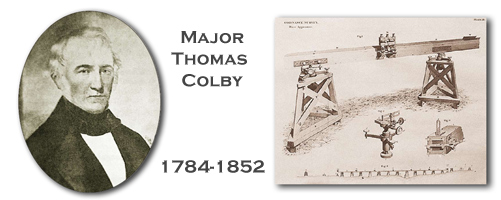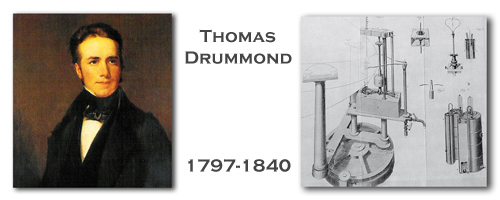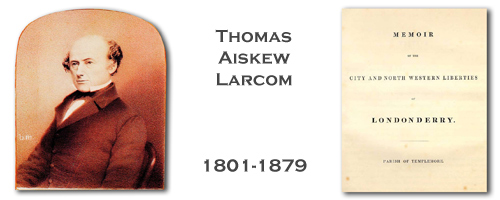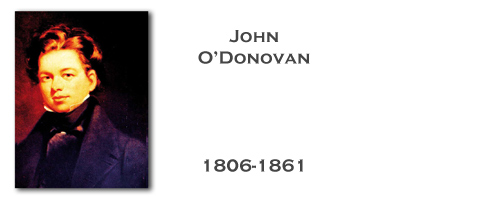Ordnance Survey Pioneers

Major Thomas Colby was placed in charge of the survey and he determined to accept nothing but the very best attainable. He set standards that were emulated throughout most of the world. He began by training the surveyors in a methodology and division of labour that would guarantee consistency across the entire survey in Ireland.
He designed the ‘compensation bars’ for measuring the baseline on the shore of Lough Foyle with the utmost standard of accuracy.
One set of men does the triangulation, another surveying, and others plot the measurements on paper, engrave, reduce to smaller scales, print, and so on. Others are responsible for the placenames, antiquities, and description of whatever may be on the ground, the correct representation of sloping ground on a map, and sea level.

Surveyor, inventor, and politician. He joined the Royal Engineers in 1815 and, rising to the rank of Lieutenant, became a surveyor with the Ordnance Survey in Ireland.
Drummond is jointly credited (with the English chemist, Goldsworthy Gurney) with the development of ‘limelight’ itself, which is based on the burning of a block of lime in a hot hydrogen-oxygen flame, resulting in exceptionally bright luminescent light. This became popular as a spot-light in theatres hence the expression ‘in the limelight’.
He further adapted the limelight and invented the “Drummond Light”, somewhat similar to the heliostat reflector, which used the ‘limelight’ enabling it to be seen at a great distance. He later served as Under Secretary of State for Ireland, during which time he made clear to the absentee landlords that “property has its duties as well as its rights” (1838). He also pioneered railway development in Ireland.

Larcom studied Irish under O’Donovan in 1818. He understood the importance of names on maps embracing all aspects of local information. Notes were taken on Local Customs, People, Economy, Population, History, Buildings and Archeology. Known as the Ordnance Survey Memoirs many were compiled in draft form but not published due to cost The Memoir of the Parish of Templemore was the only one published in 1837.

John O’Donovan worked with a team of scholars including George Petrie and Eugene O’Curry on place-name research. They researched and established the correct origin of as many of Ireland’s 63,000 townland names as possible. O’Donovan was the authority for translation for Irish and English. He followed the surveyors determining spelling and pronunciation and suggested appropriate anglicised versions.
The records of this work are known as “The O’Donovan Name books”. Donovan's letters to Larcom (The OS Letters) are regarded as an important record of the ancient lore of Ireland for those counties he documented during his years of travel throughout much of Ireland.
O’Donovan made a colossal contribution to Irish history and literature considered one of the greatest Irish Scholars of his time.
